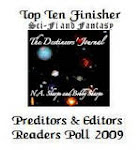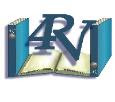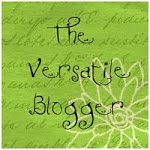One of the most important sales tools for a writer to make it out of the slush pile and into the “to be read” section of an editor’s desk is an attention grabbing query letter. This letter’s soul purpose is to convince an editor that your manuscript is the “next big thing”, the project they have waited their entire career to see, a manuscript whose very existence will change life as they know it. It is your first point of contact and first impressions are, after all, very important. To make the most of this initial contact, you need to present a well polished letter that grabs their attention in a positive way, sets you head and shoulders above the competition. After all, you have spent months, or maybe years, creating your manuscript; this is most definitely not the time to skimp on time to research the best home for your work. The purpose of this letter is to sell the idea of your work: the storyline, the concept, the characters…and you. If your query is sloppy or does not follow the editor’s guidelines, you have greatly diminished the possibility of your work making it through the process.
A query letter tells an editor many things. It shows a glimpse of your writing style as well as your knowledge of language and grammar. It shows you have (or have not) done your research to make sure this manuscript you have worked so hard to polish and perfect is a good match for this publisher (i.e. the genre of your work is a genre that particular house prints). It will also address your prior writing experience. It needs to be professional, neat, well structured and mistake free. Make sure you re-read this all important letter several times. You may even want to have someone else check it over for errors. You can’t afford to send a substandard letter. The query should be no more than one (1) single page.
When submitting any work to the editor, it is imperative to check the specific guidelines established by the publishing house you are submitting to. Do they want their submissions done electronically or on paper? If there is a specified format, FOLLOW IT, do not stray. Do not add a fancy font that you think looks prettier, do not change the margins or spacing they request (typically 1” margins all around and double spaced text…BUT this can vary so do not take anything for granted.) If the publisher would like electronic submissions, make sure they are in the format set in the guidelines or chances are, your manuscript will not get read. If the publisher wants the submission via snail mail, again, send everything requested in the form requested. Do not add anything to the submission package that was not requested, do not omit anything that was requested. If you do not follow the submission guidelines, it is routinely deleted or tossed. On this note, be aware if the editor wants the submission sent embedded in the email or as an attachment. Many are weary of viruses and routinely delete emails with attachments that were not specifically requested in that format. Publishers receive a multitude of submissions on any given day. Sending something in a different format than the guidelines is not the kind of attention you want to receive. Also, be mindful that there are some editors who are very touchy about receiving a submission package addressed to an incorrect editor (not all are, but you don’t want to take chances). It is not uncommon, however, for editors to change publishing houses. It is suggested you check the publisher’s website to verify the name of the editor who is the best match for the genre you are submitting to. If submitting electronically, do not forget to put “query” or “submission” in your subject line. This helps to make sure the submission is not deleted or routed to the spam folder.
FORMATTING YOUR QUERY
A well constructed query opens with the salutation to the editor, an introductory paragraph establishing your familiarity with the publication, and the topic of your manuscript. The next paragraph summarizes the significance of your book or article. Do not forget to include your qualifications for writing this book if it is nonfiction and end with any writing credits that are relevant. A brief final line and your signature will end the letter. Keep the letter brief. Keep it professional.
Do not forget to include all of your contact information traditionally in the signature of an electronic file, or embedded in the header of a paper submission or attached submission (again, if the publishing house allows attached submissions).
If you need to submit photos or illustrations, again be mindful of the guidelines. A common illustration file will be a JPG or GIF file 72 dpi but do not take this for granted, verify the specific guidelines regarding these files.
If the file is being submitted electronically and the cut and paste feature has been used, do not forget to go back and recheck for any foreign characters to your text.
If the query is for a book, do not forget to include the “approximate” word count and the status of the manuscript (complete or work in progress).
Many publishers have more than one imprint; include which imprint you are targeting with your submission.
In your paragraph about the book, keep it concise and focused, preferably 50 words or less. Avoid clichés and comparisons to other books (“the next Harry Potter”). This is your sales pitch. Memorize it. When anyone asks you about your book, this is what you want to tell them, a blurb about your book that piques their interest and makes them want to know more. The editor does not want to hear your family’s opinion of the book, or that you think this is the best book to have ever been written. Let your writing convince the editor of its potential merits.
Next state any relevant publishing credits: contest wins, awards, online published credits, book title with ISBN and publishing date of the book (are you the author or contributor to an anthology type publication). Don’t embellish. You will get caught. You will lose all credibility.
Make sure your letter is brief, one page is best. Make this letter shine, it is your one chance to impress this editor with this manuscript. NEVER pay a reading fee to an editor. Legitimate editors do not charge a reading fee. There is a great resource on the internet called Preditors and Editors (anotherealm.com/prededitors/). This is an excellent resource for finding out the reputation of agents, editors, publishing houses.
Do not discuss financial terms until the contract is offered. That is the time for negotiation, not before. When you receive your contract, read it carefully and cautiously; make notes of anything you have questions about. If something is not covered by the contract, address it in writing with your publisher. It is a good business practice to go over the contract with an attorney specializing in this area. He or she may have additional questions to ask the publisher.
Double check your query letter for any grammatical or spelling errors. Save a copy of your letter either to your computer or in a paper file. Check in the guidelines for time lines for expecting to hear on your submission. This is often a very long process. Do not call and bother the editors to follow up with them. They are extremely busy and, as probably explained in the guidelines, it can take several months before you can expect to hear from them. After several months and the suggested time frame has passed, it is permissible to call to follow up as long as you remain polite, professional and do not inundate them with endless questions.
Tips & Warnings•
After you have read and re-read your query, let someone else read it to check for grammatical and spelling errors. You only get one chance for a first impression. Make sure your letter reflects your command of the language and a professional demeanor.
• Be patient. Waiting is a difficult task for many of us. This is part of a process...often, a long process
Making Lists That Actually Work
5 days ago


























0 comments:
Post a Comment